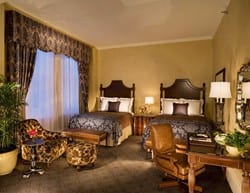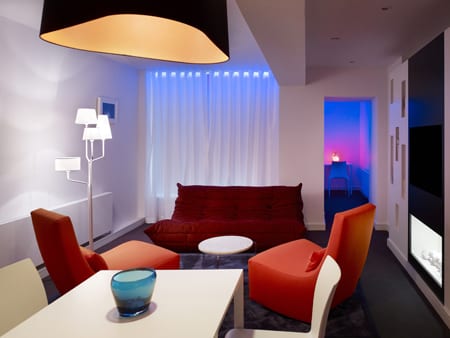 Photos of downtown New Orleans after Hurricane Katrina show huge trees downed in a tangle of timber, and windows and doors of familiar icons blown to smithereens. One such local legend, the Fairmont Hotel, found itself immersed in water and knocked out of commission for three years.
Photos of downtown New Orleans after Hurricane Katrina show huge trees downed in a tangle of timber, and windows and doors of familiar icons blown to smithereens. One such local legend, the Fairmont Hotel, found itself immersed in water and knocked out of commission for three years.
 Reopened last summer under the Waldorf-Astoria flag as the Roosevelt, after a $145 million restoration, the property has returned to its former glory-and then some. “I think it’s even better than before,” says Steve Finegan, the New Orleans architect involved with the project.
Reopened last summer under the Waldorf-Astoria flag as the Roosevelt, after a $145 million restoration, the property has returned to its former glory-and then some. “I think it’s even better than before,” says Steve Finegan, the New Orleans architect involved with the project.
Guestrooms were redesigned – by Houston’s Paradigm Design Group-in a style that leans toward neoclassical and a palette that skews to the autumnal (olive, berry, gold, and brown). A reconfiguration brought the the former total of 700 down to 504, of which 135 are suites. Other additions include a new restaurant, Domenica, by New Orleans’ star chef John Besh, a 12,000-square-foot Guerlain spa, and a reworked outdoor pool deck, handled by Finegan.
 The hotel, which opened in 1893 as the Grunewald and was renamed the Roosevelt in 1923, had suffered through the various design vagaries of the passing eras. When it changed hands again to become the Fairmount in 1965, much of its Art Nouveau glory was veiled.
The hotel, which opened in 1893 as the Grunewald and was renamed the Roosevelt in 1923, had suffered through the various design vagaries of the passing eras. When it changed hands again to become the Fairmount in 1965, much of its Art Nouveau glory was veiled.
 This restoration unveiled long-hidden charms. Crystal chandeliers throughout the lobby were hand-cleaned, murals were restored in the hotel’s signature Sazerac bar, and in Teddy’s Cafe, a round ceiling detail was exposed once again.
This restoration unveiled long-hidden charms. Crystal chandeliers throughout the lobby were hand-cleaned, murals were restored in the hotel’s signature Sazerac bar, and in Teddy’s Cafe, a round ceiling detail was exposed once again.
Perhaps the greatest treasure was discovered by designer Lisa Haude of Paradigm. “I was there during one of the demolition walk-throughs,” she says, “and I noticed this great mosaic tile flooring.” Although the tile was too damaged to use, Haude worked closely with Daltile to recreate it, a method she used throughout the hotel.
 Her office custom-designed both millwork for Teddy’s that echoed those from the era, and carpets for the lobby that incorporate New Orleans motifs such as the fleur de lis and Mardi Gras crests. “There’s an intricate link between the city and this hotel,” Haude says. “When it reopened, people came up and hugged us and said, ‘this means New Orleans is back.'”
Her office custom-designed both millwork for Teddy’s that echoed those from the era, and carpets for the lobby that incorporate New Orleans motifs such as the fleur de lis and Mardi Gras crests. “There’s an intricate link between the city and this hotel,” Haude says. “When it reopened, people came up and hugged us and said, ‘this means New Orleans is back.'”


